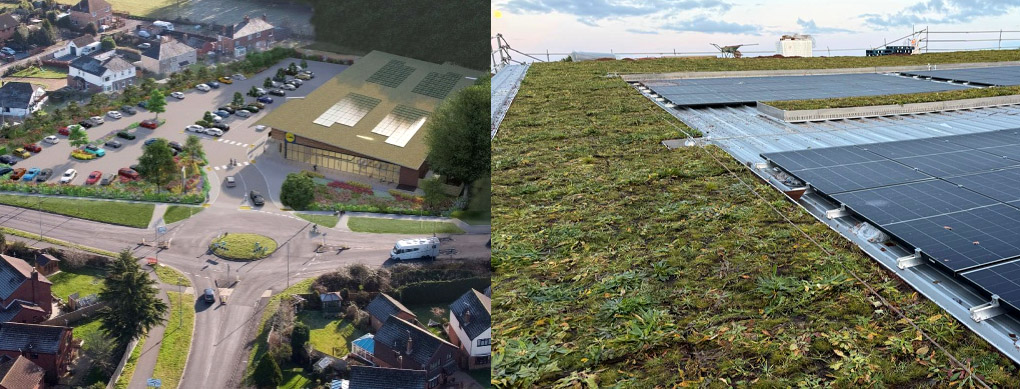Biodiversity Net Gain
Increasing Biodiversity Through Development
In light of the Environment Act 2021, developers across the UK are now required to demonstrate a minimum 10% Biodiversity Net Gain (BNG) on their construction projects—a shift that encourages design strategies enhancing ecological value and protecting the environment.
Urban greening, particularly green living roofs and living walls offer a compelling solution, particularly in urban and densely developed environments where land-based enhancements are limited. Green roofs and living walls transform under used or static spaces into vibrant habitats that can support a range of species, including pollinators, birds, and invertebrates, even in the most built up environments.
By incorporating native wildflowers, sedum species, and structural diversity elements (such as logs, pebbles, and varied planting depths), living roofs can be tailored to meet specific local biodiversity targets. Their elevation above ground level also provides ecological connections between otherwise fragmented habitats, acting as stepping stones for wildlife across the urban landscape. This is especially relevant in cities like London, where strategic green corridors are critical to local biodiversity planning.
Beyond their ecological credentials, green roofs also contribute to multifunctional green infrastructure, helping regulate temperature, absorbing rainwater, and improving air quality. This brings added value to developments while supporting the required Biodiversity Net Gain targets. With biodiversity scoring tools such as Natural England’s Biodiversity Metric, these roofs (and living walls) can be quantified to prove their contribution toward net gain requirements, ensuring developers comply with planning conditions while championing sustainable design.
How do green roofs compare to green walls in biodiversity impact?
Green Roofs: Elevated Habitat Builders
- Biodiversity Potential: High, especially with biodiverse or intensive planting. They can support wildflowers, sedum, grasses, and even small shrubs.
- Habitat Creation: Provide nesting and foraging spaces for birds, bees, butterflies, and invertebrates. Some UK roofs have even attracted foxes and bats.
- Ecological Connectivity: Act as stepping stones across fragmented urban landscapes, helping pollinators move between green spaces.
- BNG Scoring: Biodiverse green roofs score well under Natural England’s Biodiversity Metric, especially when designed with varied substrate depths and native planting.
- Limitations: Require structural support and careful water management. Sedum-only roofs offer lower biodiversity value.
Green Walls: Vertical Biodiversity Boosters
- Biodiversity Potential: Moderate to high, depending on plant diversity and depth. Ivy and mixed-species facades support more invertebrates than bare walls.
- Habitat Creation: Offer shelter and food for insects, birds, and pollinators. Repeated Studies show increased bird presence in areas with living walls.
- Microclimate Benefits: Help regulate temperatures and trap pollutants, indirectly supporting biodiversity.
- BNG Scoring: Can contribute to BNG, especially when designed with native species and integrated features like bird boxes or bug hotels.
- Limitations: Less surface area than roofs, and biodiversity impact can vary widely depending on maintenance and plant selection.

While green roofs offer elevated, high-scoring habitats ideal for pollinators and nesting species, green walls provide vertical biodiversity corridors that enhance ecological value in space-constrained urban settings. Together, they form a complementary strategy for achieving Biodiversity Net Gain.








